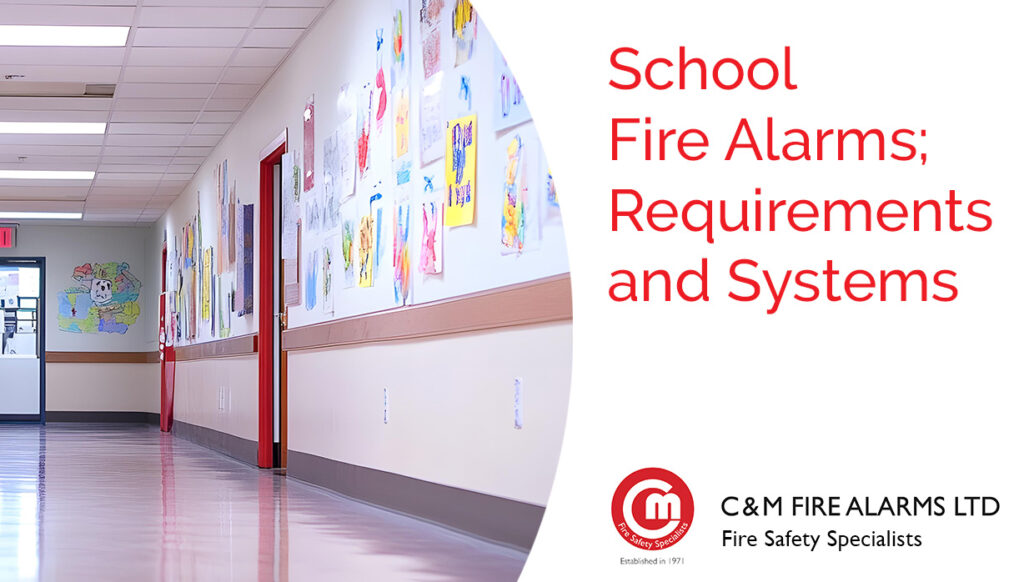
In the UK, schools are legally required to implement comprehensive fire alarm systems tailored to their specific environments, adhering to national regulations.
Regulatory Requirements for Schools
Under the Regulatory Reform (Fire Safety) Order 2005, all educational premises must conduct regular fire risk assessments to identify potential hazards and implement appropriate safety measures. Guidance from the Department for Education recommends that schools review these assessments annually or at least every three years to ensure they remain current and effective. [LINK]
Fire detection and alarm systems are integral components of a school’s fire safety strategy. These systems should undergo weekly tests, with different manual call points tested each time to ensure comprehensive coverage. Additionally, quarterly and annual inspections by competent personnel are mandated to maintain system reliability. All maintenance activities must be documented and accessible to the fire service.
Selecting Appropriate Fire Alarm Systems
The choice of a fire alarm system depends on the school’s size, layout, and specific requirements:
- Small Settings (e.g., Nurseries):
- Conventional Fire Alarm Systems: Ideal for smaller establishments, these systems divide the building into zones. In the event of an alarm, the control panel indicates the affected zone, aiding in swift identification and response.
- Large Settings (e.g., Secondary Schools with Extensive Campuses):
- Addressable Fire Alarm Systems: Suitable for larger schools, these systems assign a unique address to each device (e.g., detectors, call points), allowing the exact location of an incident to be identified immediately. This precision is crucial for complex environments with specialised areas like science laboratories and kitchens.
- Wireless Fire Alarm Systems: For schools where extensive cabling is impractical, such as historic buildings, wireless systems offer flexibility and ease of installation. They function similarly to addressable systems but use secure radio communications between devices and the control panel.
Tailoring Systems to Specific Areas
For example, certain school areas present unique fire risks:
- Science Laboratories: Given the presence of flammable chemicals, installing heat detectors that respond to rapid temperature increases can provide early warnings without being triggered by non-hazardous activities.
- Kitchens and Canteens: These areas are prone to grease fires; thus, specialised detectors designed to recognise such fires are recommended.
Partnering with Accredited Fire Safety Providers
Collaborating with experienced and accredited fire safety providers like C&M Fire Alarms ensures that schools receive tailored solutions compliant with current standards. Providers with certifications from organisations like BAFE (British Approvals for Fire Equipment) and memberships with the FIA (Fire Industry Association) demonstrate a commitment to quality and adherence to industry best practices. For instance, a company with over 50 years of experience serving the local community (Horsham / Crawley or Sussex / Surrey / Kent, etc. ) and holding accreditations from BAFE and the FIA would be well-equipped to address the diverse fire safety needs of educational institutions.
Choose C&M for your School’s Fire Alarm Systems
At C&M Fire Alarms, our wealth of experience and expertise in the educational sector, which includes sites like Lancing College, Farlington, Steyning Primary, All Saints, etc., ensures we can implement a fire alarm system that aligns with your school’s specific requirements, safeguarding both occupants and property. We also offer services for regular maintenance (PPM), adhering to regulations, and offering an effective fire safety strategy in your educational setting.
Call for a no-obligation quotation for your school setting:
Call 01403 268178
Email: [email protected] [Link opens new email]
Contact us via the website; simply click the button at the top of the page.